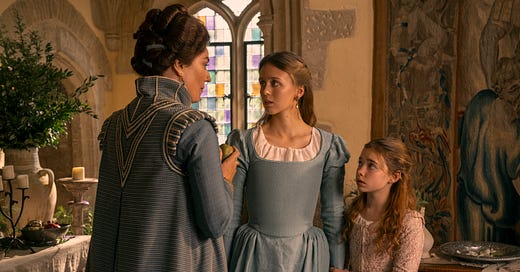Notes on 'My Lady Jane' Season 1 Episode 3: "With a Girl Like You"
On My Lady Jane's quest to rewrite history, figurative and literal daggers, and saying "Fuck that!"
As a reminder, this newsletter now has a paid subscription available. If you enjoy my writing and want to support this newsletter, please consider becoming a paid subscriber.
First and foremost, I want to thank everyone who has read my letters about My Lady Jane’s series premiere and “Wild Thing.” The response has been amazing and unexpected. I hope you enjoy this one (and all the rest), too!
Written by Shepard Boucher, Gemma Burgess, and Meredith Glynn and directed by Jamie Babbit, My Lady Jane Season 1 Episode 3, “With a Girl Like You,” breathes more life into the already vibrant characters and their world. It can do so easily because the show knows what it is and who it’s for from the beginning.
“I’m so proud the creators of this show had such a clear vision. It is so unique that I think a lot of people didn’t know what to do with it. I’m so proud that we managed to execute something that is exactly what we wanted to do. It’s so hard not to compromise, especially when you’re dealing with revisionist history and a female protagonist. But with this dark sardonic and sarcastic humor, it’s hard not to have to sacrifice some things. I think that the project holds to what we wanted.” - Emily Bader for Rose and Ivy
My Lady Jane moves confidently, knowing it will find its audience, and based on the number of TikTok fan edits, it has. Co-showrunner and executive producer Gemma Burgess called audiences “sophisticated now” and credited them for understanding genres so that My Lady Jane can “gleefully” subvert them.
The show’s success is also possible because the women at the helm know people yearn for diverse, fun, life-affirming, and romantic stories. So, it tracks that Babbit shared that My Lady Jane pulls inspiration from Bridgerton as Shonda Rhimes “really showed that shows about women, and for women, have a huge audience.”

Per co-showrunner and executive producer Meredith Glynn, that perspective was always the goal: “We [Glynn and Burgess] always wanted to keep it surprising, to keep it fast-paced, but to always keep Jane as the heart of the show — the North Star.”
That sense of direction is even evident in this episode, which keeps Jane from much of the ensemble and uses the freedom of earlier exposition to get to know My Lady Jane’s Tudor era on a deeper level. Notably, “With a Girl Like You” reintroduces Frances, Katherine, and Margaret without Jane by their sides.
As Jane tells Guildford that Frances locked herself away, Margaret stopped talking, and Katherine couldn’t stop crying when her father died, My Lady Jane also presents the three women as they are now: Frances is always on the move, Margaret refuses to be silent, and Katherine yearns for happiness and true love.
In another show that cares less about female characters, these three women could get stuck as only supplementary forces in Jane’s story. In the wise words of Margaret Grey, My Lady Jane says, “Fuck that!” (A perfect line is utterly perfect!)
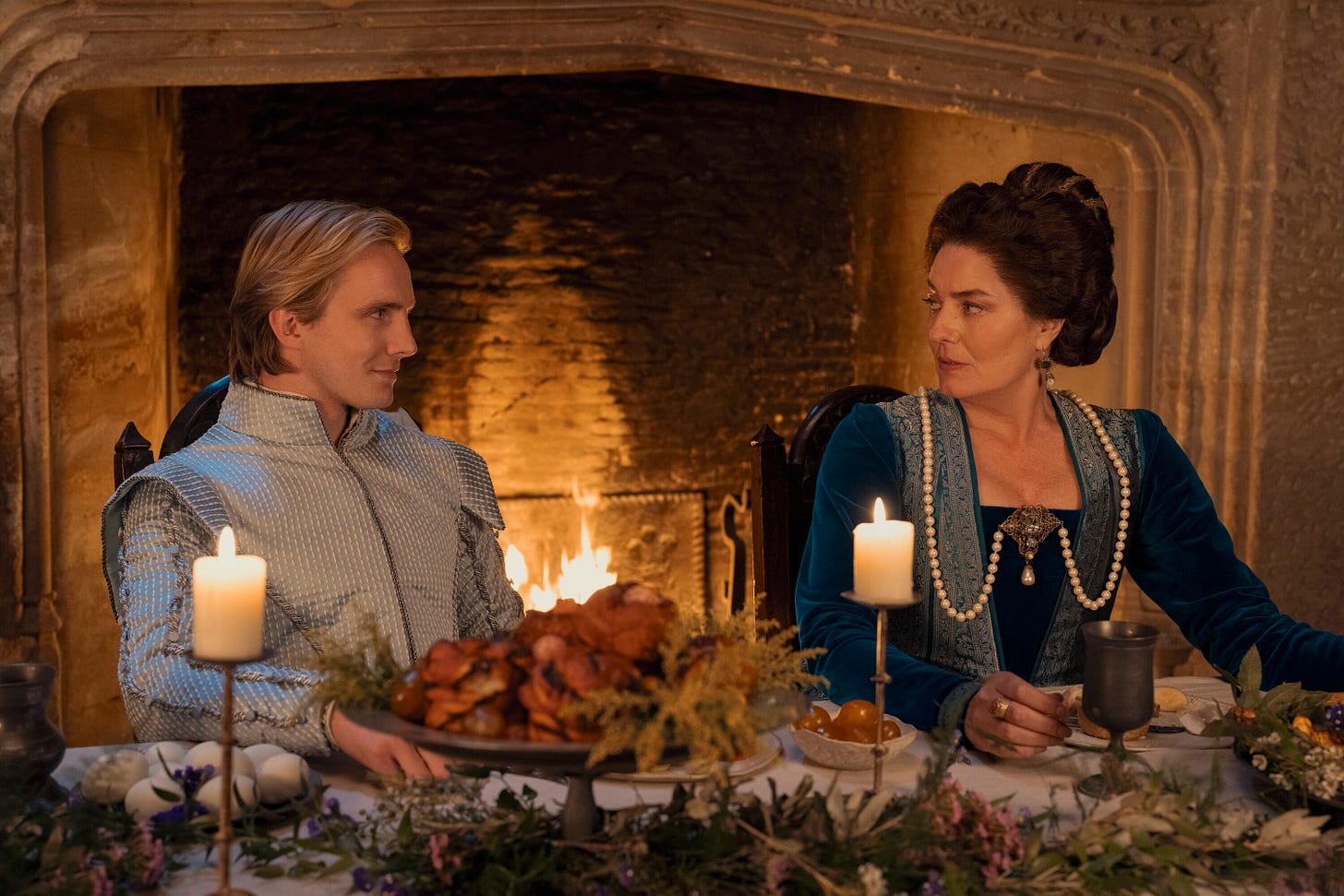
I must say that Anna Chancellor is brilliant (Is anyone surprised?) as the often calculating, sometimes cold or cruel, and very clever Lady Frances Grey.
Unfortunately, Frances’ quest for a healthy financial status — equalling security and influence even in an alternative history — usually comes at the expense of her daughters. It’s telling any admissions of guilt or deep-cut revelations come from the Narrator (or Author); they’re far too personal for Frances to say aloud.
“With a Girl Like You” balances the Narrator’s insights (Confirming that “forcing your daughter to marry against her will in order to assure you own financial security” is “easier the second time”) with Frances’s actions (Showing no interest in how or why the Duke of Leicester died; the brief marriage = inheritance = safety).
My Lady Jane never says more than it shows, and it’s better for it. Just like the show is better for encouraging Frances to take up space as a multi-faceted matriarch, it’s much more interesting than a one-note, mustache-twirling villain.
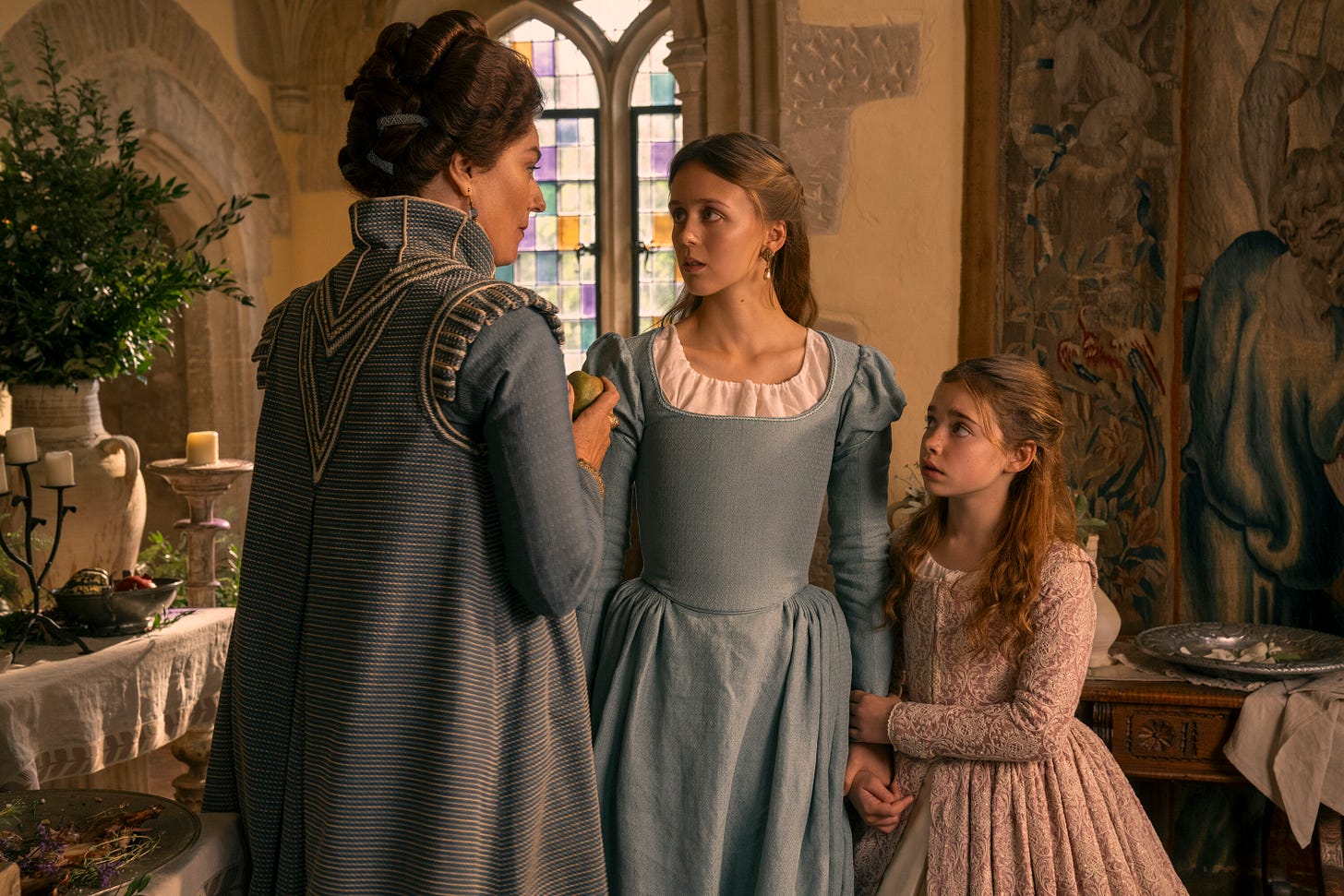
Those qualities tend to make Frances revered, so much so that Lord Dudley knows he needs to defer to her — someone with “royal blood,” “skills,” “smarts,” and a “scheming prowess” — to get him out of the Tower of London. Frances may make horrendous and selfish choices, but she’s also interesting because she moves through this alt-Tudor world the way only men usually do in historical TV shows.
The same is true of the youngest Grey daughter — Margaret. It’s common for youngest siblings to fade in and out of series with little to no consequence, but My Lady Jane makes historic waves with Robyn Betteridge’s small but mighty role.
Of course, My Lady Jane is a game-changing show for how it rewrites history for its heroine. According to Bader, the series takes “one of history’s most tragic female figures” and gives “her agency and a chance to possibly make a better future for herself with the backdrop of fantasy, romance, and everything else. What if she could save herself with her strength, mental acuity, and all those things you don’t normally see?”
I was stunned to learn that so little is known about Jane Grey that the Tower of London assumed Bader was researching Jane Austen. Bader found it shocking “for her life to just end up a footnote on a page for some people.” My Lady Jane makes it so Jane isn’t the only real-life person-turned-character to avoid that footnote status.
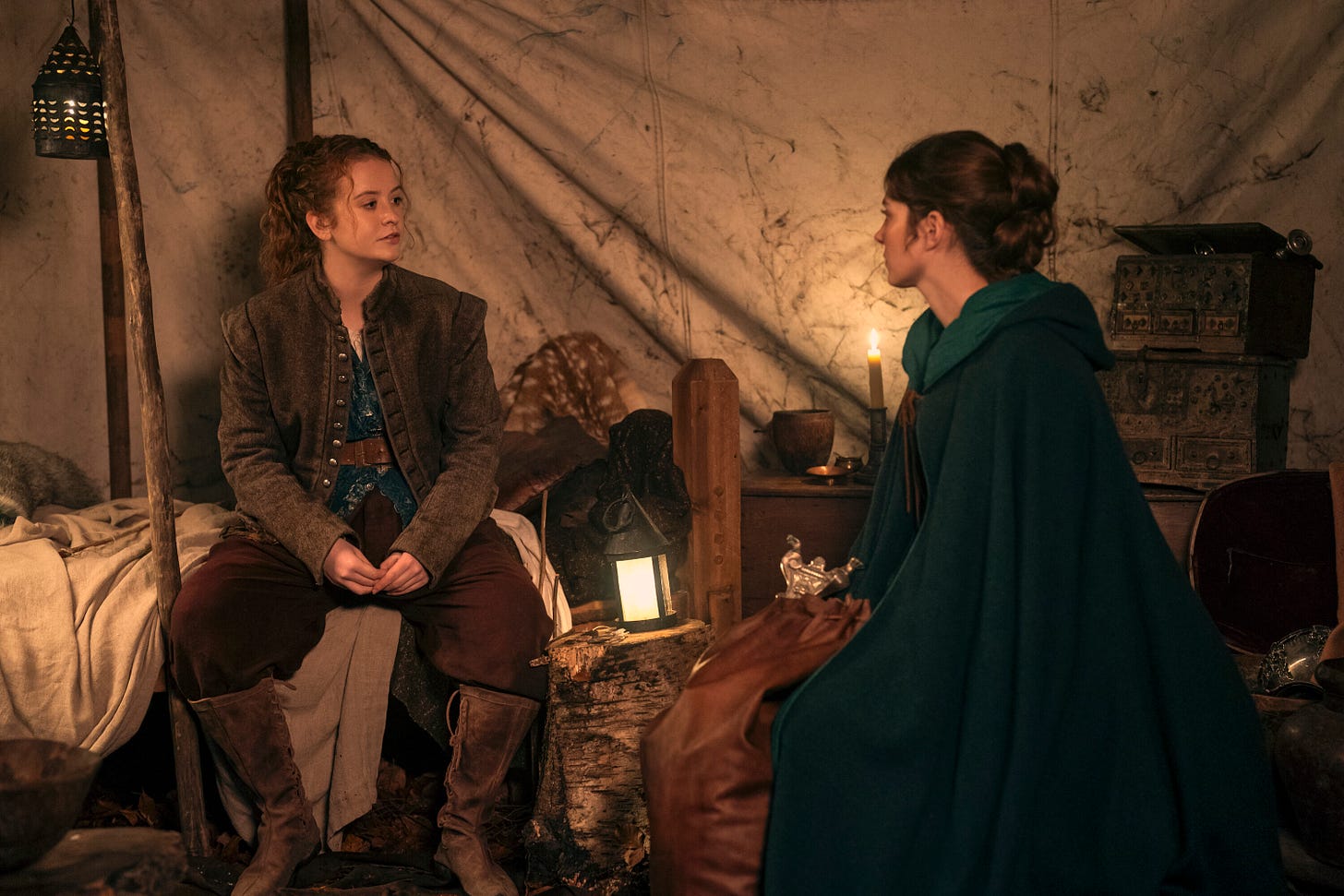
Edward Bluemel makes a good point in that My Lady Jane’s “heavily, heavily embellished” version of history is “…also a chance for people to take an interest in what really happened, to learn the history we aren’t telling.”
To that point, it’s when Frances finds Katherine and Margaret by a very dead Duke that I realize I already know more about these fictional versions than the real women. This week, my curiosity to learn more led me to the “Tudor? I Hardly Know Her!” series on Anne Foster’s Vulgar History a la Carte. I suggest it!
In the show’s version of history, Bader says Jane’s “knowledge is from books, it’s not based in real experience.” My Lady Jane exemplifies that when Susannah challenges Jane’s perception of their friendship and her view of the Pack. As good as the dagger duel between Jane and Guildford is (Oh, you’re about to be so sick of me!), emotional daggers like this are excellent, too. It gives Susannah depth apart from her connection to Jane and reaffirms Jane as a flawed heroine (As she should be!).
If Jane is to be (at least) a Nine-Day Queen who tries to make the Kingdom better for Ethian and Verity people, she must see the world beyond her bubble.
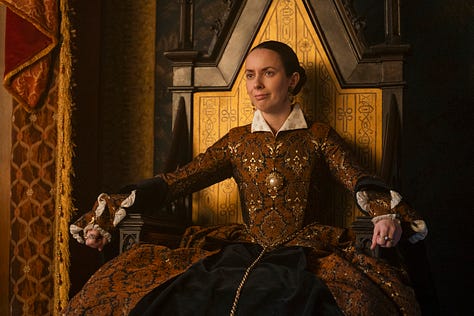
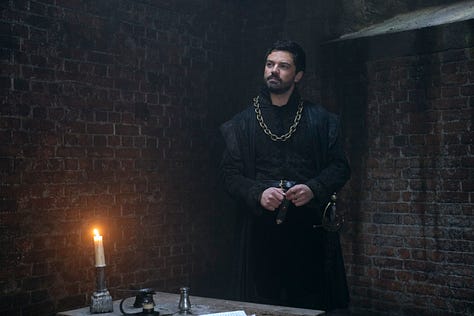
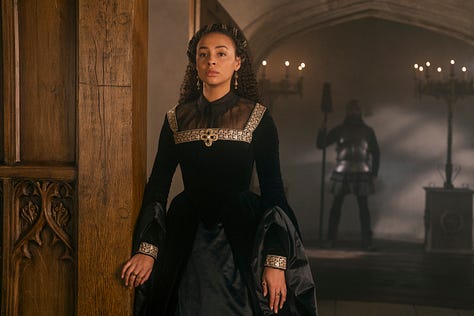
It’s perfect for “With a Girl Like You” to juxtapose Jane’s efforts to be and do better with Mary’s determination to double down on the opposite. Kate O’Flynn describes Mary as a “powerful frayed nerve,” which comes into sharper focus during this episode, alongside Seymour being “an angry puppy dog,” per Dominic Cooper.
Perhaps more importantly, My Lady Jane doesn’t discount “sweet Bess” and reintroduces her as a quiet observer who is more tuned in than others realize.
What’s extra fantastic is that My Lady Jane avoids making its male characters into bland side characters. Stan’s desperation to be loved and recognized by his dad (and wanted by Frances) makes him more interesting. Lord Dudley’s motives flutter between deeply selfish and selfless, keeping everyone on their toes.
And Guildford is as complicated as they come. If you have any doubts, “With a Girl Like You” reveals that he first changed when his mother was murdered. So, hearing the Narrator say, “If therapists were invented in 1553, our brooding, tortured hero would be a different man, and this would be a different story. But they weren’t. And he isn’t. And it can’t be. So here we are,” by the episode’s end is extra heartbreaking.
My Lady Jane tells an emotionally intelligent story with Guildford, who has so much brewing beneath the surface. He relieves that pressure with banter that quickly evolves from a defense mechanism to a connective tool.
Glynn shared, “We wanted banter to be their love language. We wanted it to be the way that they wanted it to be foreplay for them.” That sentiment shines in the action sequences that give off Buffy the Vampire Slayer and Ella Enchanted vibes.
Bader even points out that “Guildford’s poetry for Jane is just allowing them to have intellectual banter. That is a bouquet of red roses for her.” How romantic!
Even when they point daggers at one another or fight off Kingsland Guards who want them dead, Jane and Guildford affectionately bicker. My Lady Jane’s creative cleverness believably strengthens the tension between them, so it’s no wonder Jane briefly throws out the sensibility of divorce. Suddenly, it only makes sense for Jane and Guildford to act on their feelings — until she defines it as “madness.”
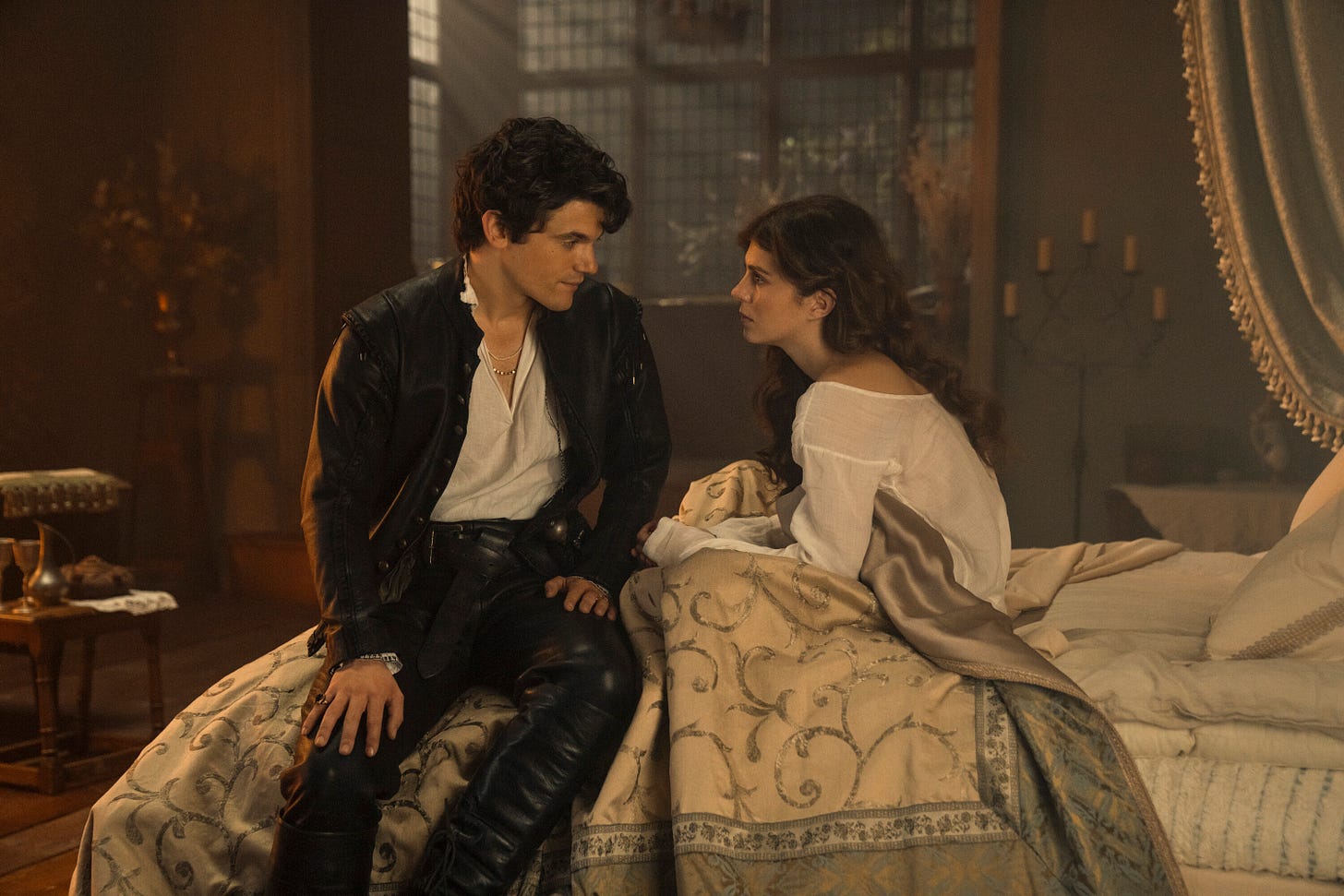
“She’s in complete shock at the reality of her feelings. [The attraction] scares her, because she expected herself to be, sort of, an independent solo-venture woman for the rest of her life, and all of the sudden, she’s having these feelings she can’t hide. It’s hard for her to let that in,” Bader tells Elle Canada. That’s already an exciting place to leave Jane.
Then, “With a Girl Like You” (aptly named after the Troggs song released after the success of “Wild Thing”) takes the newly established sense of stability (Frances believes her family has security; Mary and Seymour are confident the crown is theirs; Jane and Guildford make progress with their feelings, if not on an Ethian cure) and rips it out from under everyone. Thanks, Petunia!
Oh, and Lady Jane Grey, mourning her cousin, is officially Queen Jane. Wow!
My Lady Jane is genuinely propulsive storytelling, which is well on its way to becoming a lost art. But this show also knows how and when to sit with its characters, when to let the pain sting and the unresolved feelings burn. And it sets all of that to a killer soundtrack. It’s simply incredible, must-watch TV.
Until next time,
💌 Shelby


